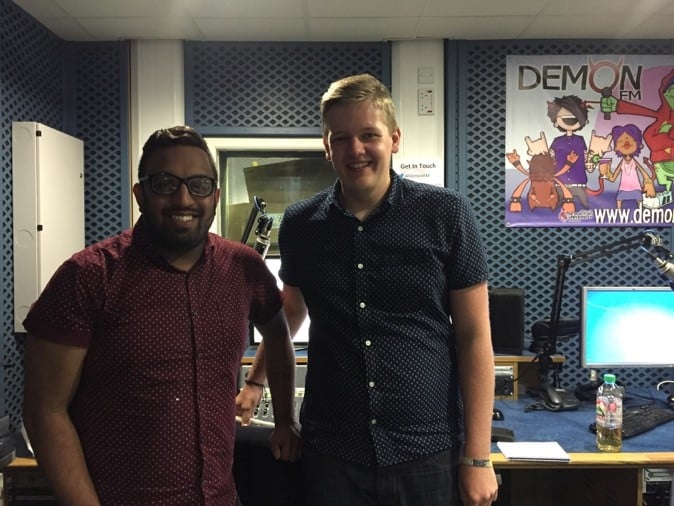
Every year, music fans are treated to the simultaneous Reading & Leeds Festivals during the late-summer August Bank Holiday weekend. With previous headline acts including the likes of Nirvana, Red Hot Chili Peppers, Foo Fighters, Iron Maiden and Pink Floyd, the festivals are often credited as the “best of the year”. Here we take a look at the history of these notable festivals and explore the highs and lows of Reading & Leeds.
Festival Conception
Reading Festival, the oldest leg of the two, initially started out as the National Jazz Festival created by Marquee Club founder Harold Pendleton. The NJF was first held at Richmond Athletic Ground way back in 1961, and took most of its inspiration from large-scale events held in the US. Throughout the decade that it was known as the National Jazz Festival, its name was changed several times along with its location, which spanned everywhere from Windsor Racecourse to Kempton Park, before reaching its now permanent home in Reading in 1971.

EARLIER IN RICHMOND: A ticket to the Reading Festival’s predecessor, the National Jazz Festival.
Early Days
Upon settling into its home, the Reading Festival quickly found its genre niche, playing home to prog rock, blues and heavy metal across the 70s. The festival also invited punk rock bands from 1978 onwards, along with trying to create a bill that each year covered both traditional rock and new punk sounds. This was a controversial move that often saw fans clash in the mosh pit and thus the festival returned to focusing primarily on heavy metal and rock acts.
From the start of the 80s the festival attempted to reinstate punk bands into its line-up, offering the opening day of the festival to such bands, along with new wave bands. The remaining two days then played host to the era’s best rock and heavy metal groups. However, during the mid 1980s the festival was almost wiped out when the Tory-led local council claimed the festival grounds for redevelopment. They also refused to offer any alternate grounds for the festival to take place on. But it was Labour to the rescue in 1986, who gave permission to the festival organisers to put the festival on the fields across from the original site.
The late 80s saw the festival oust its founder, Pendleton, as a result of its unexpected mainstream pop line-up of Squeeze and Bonnie Tyler. From then on it was all-downhill. Pendleton’s Mean Fiddler Music Group took on the role of organising the festival, with a goth and indie line-up – a move that ultimately alienated the festival’s original fan base.
Uphill in the 90s
After a late-80s slump, the festival’s organisers opted to broaden its musical horizons helping to swell audience numbers once again. 1992 saw Nirvana’s iconic Reading performance, whilst Britpop bands such as Blur and Suede also enjoyed a place on the bill. From then on the bill also saw rap artists on its listings, along with dominating genres such as indie and rock.

ICONIC 90s: The official poster for the 1992 Reading Festival.
In 1999 the festival introduced its second leg in Leeds, at Temple Newsam – previously home to the V Festival. Leeds was added to the festival due to Reading’s capacity being too small for demand. Initially, bands that played at Reading played Leeds the day after, with each leg running Friday to Sunday and Saturday to Monday respectively. The current scheduling where the Reading line-up plays Leeds the following day with the opening Leeds bands playing Reading on the Sunday was introduced in 2001.
Riotous Leeds
The Leeds leg was plagued by riots, despite a successful first year. This violence led to licensing issues that ultimately saw the festival move to its current location at Bramham Park. With security upped and problems down though, both festivals have gone from strength to strength. Both main stages increased their capacity in 2005, whilst weekend tickets continue to sell out in just two hours each year.

ADMIT ONE: A ticket stub to Leeds Festival 2007, under its former guise of the Carling Weekend: Leeds.
In the present
Currently, Reading Festival continues to be held at Richfield Avenue whilst Leeds Festival continues to operate at Bramham Park, whilst both are still organised by the Mean Fiddler Music Group under their new guise of Festival Republic. There are now eight stages at each leg of the festival, which are as follows:
- Main Stage – Major acts, including the headliners, spanning rock, indie, metal and alternative acts.
- NME/Radio 1 Stage – Less well known acts that build up to an alternative headliner.
- Radio 1 Dance Stage – Now a standalone 3-day dance act stage in 2013, after previously sharing days with the Lock Up Stage.
- Lock Up Stage – Home to underground punk and hardcore acts.
- Festival Republic Stage – Previously known as the Carling Stage, with a line-up of lesser known and break-through acts.
- 1Xtra Stage – New for 2013, set to play host to hip-hop, R ‘n’ B and Rap artists in particular.
- Alternative Tent – Home to cabaret acts, DJ and comedians.
- BBC Introducing Stage – Giving unsigned and breakthrough acts a chance to shine. Formerly known as the Topman Unsigned Stage.
The Reading & Leeds Festivals are this year headlined by Biffy Clyro, Eminem and Green Day. We hope that you have a brilliant time this weekend if you’re there. If you aren’t there like us Demon Music writers, remember that you can enjoy the coverage from your arm-chair across all of the BBC channels plus the red button service and on iPlayer. Enjoy!
If you have a couple more minutes to spare, why not check out the past week’s other content?




